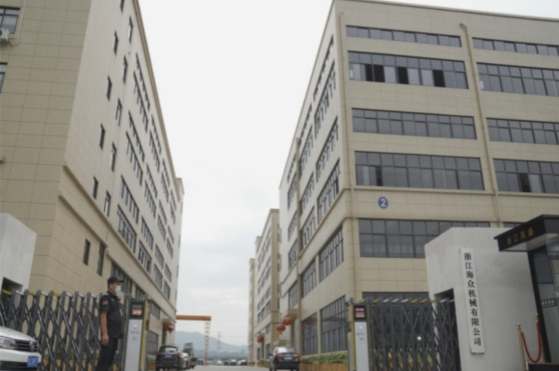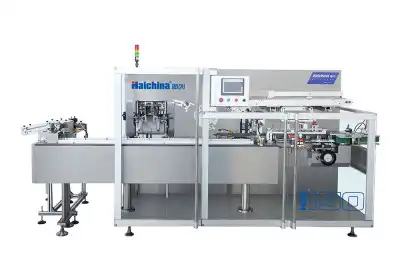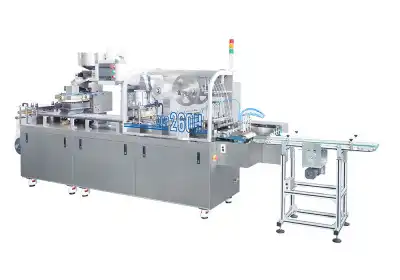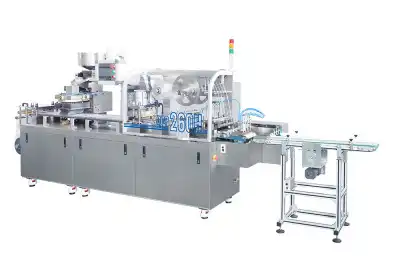The Evolution and Fundamentals of Cartoning Technology
Historical Development of Cartoning Machines
The journey of cartoning machines began in the late 19th century, evolving from manual box-forming processes to the sophisticated automatic cartoning machines we see today. Early cartoners were simple mechanical devices, often requiring significant human intervention. As industries grew and demand for faster packaging solutions increased, engineers and inventors worked tirelessly to improve these machines.
The mid-20th century saw a significant leap in cartoning technology with the introduction of semi-automatic machines. These innovations reduced labor requirements and increased production speeds. The advent of electronics and computer-controlled systems in the latter part of the century marked another milestone, paving the way for fully automatic cartoning machines capable of handling complex packaging tasks with minimal human oversight.
Core Components of Modern Cartoners
Today's cartoning machines are marvels of engineering, comprising several key components that work in harmony to ensure efficient and precise packaging. The infeed system is responsible for accurately positioning and orienting products for insertion into cartons. Carton magazines hold and dispense flat carton blanks, while forming mechanisms shape these blanks into three-dimensional boxes.
Product insertion mechanisms, which vary depending on the nature of the items being packaged, carefully place products into the formed cartons. Closing and sealing systems then secure the cartons, often using adhesives or interlocking tabs. Many modern cartoners also incorporate quality control features such as checkweighers and vision systems to ensure packaging accuracy and product integrity.

Types of Cartoning Machines and Their Applications
The packaging industry offers a diverse range of cartoning machines, each designed to meet specific packaging needs. Horizontal cartoners, ideal for products that can be loaded from the side, are commonly used in the food and pharmaceutical industries. Vertical cartoners, which load products from the top, are well-suited for items that require gentle handling or have unique shapes.
Continuous motion cartoners excel in high-speed environments, offering unparalleled production rates for industries with massive output requirements. Intermittent motion machines, while slower, provide greater flexibility and are often preferred for complex packaging operations or frequent product changeovers. Specialized cartoners, such as those designed for blister packs or pouches, cater to niche packaging requirements in various sectors.
Optimizing Efficiency with Automatic Cartoning Machines
Benefits of Automation in Packaging
The shift towards automatic cartoning machines has brought numerous advantages to the packaging industry. These sophisticated systems significantly enhance production speeds, allowing businesses to meet increasing demand without compromising on quality. By minimizing human intervention, automatic cartoners reduce the risk of errors and ensure consistent packaging results, crucial for maintaining brand reputation and customer satisfaction.
Moreover, automation in cartoning leads to substantial cost savings in the long run. While the initial investment may be higher compared to manual or semi-automatic systems, the reduction in labor costs and increased efficiency result in a favorable return on investment. Automatic cartoning machines also contribute to improved workplace safety by eliminating the need for operators to handle potentially dangerous machinery directly.
Key Features of High-Performance Cartoners
Leading automatic cartoning machines boast an array of features designed to maximize efficiency and versatility. Quick-change tooling allows for rapid product changeovers, minimizing downtime and enhancing production flexibility. Advanced servo motors and precise control systems ensure smooth operation and accurate positioning of products and cartons throughout the packaging process.
Integration capabilities are another crucial aspect of modern cartoners. These machines often come equipped with interfaces that allow seamless connection with other packaging line equipment, such as fillers, labelers, and case packers. This integration facilitates the creation of comprehensive packaging solutions that can be monitored and controlled from a single point, streamlining operations and improving overall line efficiency.
Customization and Flexibility in Cartoning Solutions
The diverse needs of different industries have led to the development of highly customizable cartoning solutions. Manufacturers like Zhejiang Haizhong Machinery Co., Ltd. offer a range of options to tailor cartoning machines to specific product requirements. This customization extends to carton sizes, shapes, and materials, allowing businesses to create unique packaging that stands out on the shelf while maintaining optimal protection for the product.
Flexibility is also a key consideration in modern cartoning systems. Many machines are designed to handle multiple carton styles and sizes with minimal adjustments, providing the versatility needed to adapt to changing market demands or seasonal product variations. This adaptability is particularly valuable in industries with diverse product lines or those subject to frequent packaging updates.
Future Trends and Innovations in Cartoning Technology
Integration of Smart Technologies in Packaging Machinery
The future of cartoning technology is closely tied to the broader trends of Industry 4.0 and the Internet of Things (IoT). Smart cartoning machines equipped with advanced sensors and data analytics capabilities are becoming increasingly common. These intelligent systems can monitor their performance in real-time, predict maintenance needs, and even adjust operations autonomously to optimize efficiency.
Artificial intelligence and machine learning algorithms are being integrated into cartoning systems to enhance decision-making processes. These technologies can analyze vast amounts of production data to identify patterns and suggest improvements, leading to continuous optimization of packaging operations. The result is not just increased efficiency but also a more agile and responsive packaging process capable of adapting to changing production requirements on the fly.
Sustainability and Eco-Friendly Packaging Solutions
As environmental concerns take center stage, the packaging industry is witnessing a significant shift towards sustainability. Automatic cartoning machine manufacturers are responding by developing systems that can handle eco-friendly packaging materials effectively. This includes machines capable of working with recycled or biodegradable carton stocks without compromising on speed or reliability.
Energy efficiency is another area of focus in the development of next-generation automatic cartoning machines. Manufacturers are incorporating energy-saving features such as regenerative braking systems and optimized motion control to reduce power consumption. Some advanced automatic cartoning machines even include features to minimize material waste during the packaging process, contributing to both cost savings and environmental sustainability.
Advancements in User Interface and Remote Monitoring
The complexity of modern cartoning machines necessitates intuitive and user-friendly interfaces. Touch screen controls with graphical user interfaces (GUIs) are becoming standard, allowing operators to monitor and adjust machine parameters easily. These interfaces often include tutorial modes and troubleshooting guides, reducing the learning curve for new operators and minimizing downtime due to operational errors.
Remote monitoring and control capabilities are also gaining prominence in cartoning technology. These features allow technicians to diagnose and often resolve issues without being physically present at the machine, reducing response times and improving overall equipment effectiveness. Some systems even offer augmented reality (AR) support, enabling remote experts to guide on-site personnel through complex maintenance or repair procedures in real-time.
Conclusion
The world of cartoning machinery continues to evolve, driven by technological advancements and changing market demands. From the basic principles that govern these machines to the cutting-edge innovations shaping their future, understanding automatic cartoning machines is crucial for businesses looking to optimize their packaging processes. As we've explored, the integration of smart technologies, focus on sustainability, and advancements in user interfaces are set to redefine the capabilities of cartoning machines. By staying informed about these developments and choosing the right packaging solutions, companies can enhance their operational efficiency, reduce costs, and meet the ever-growing expectations of consumers in a competitive marketplace.
Contact Us
Ready to revolutionize your packaging process? Contact Zhejiang Haizhong Machinery Co., Ltd. at [email protected] to explore our state-of-the-art cartoning solutions tailored to your specific needs. Let's work together to unlock the full potential of your packaging line and drive your business forward.





